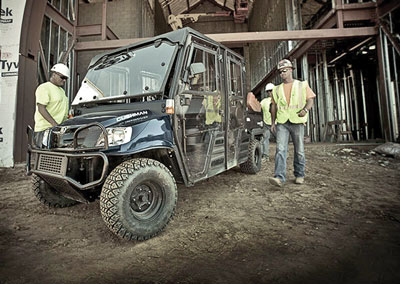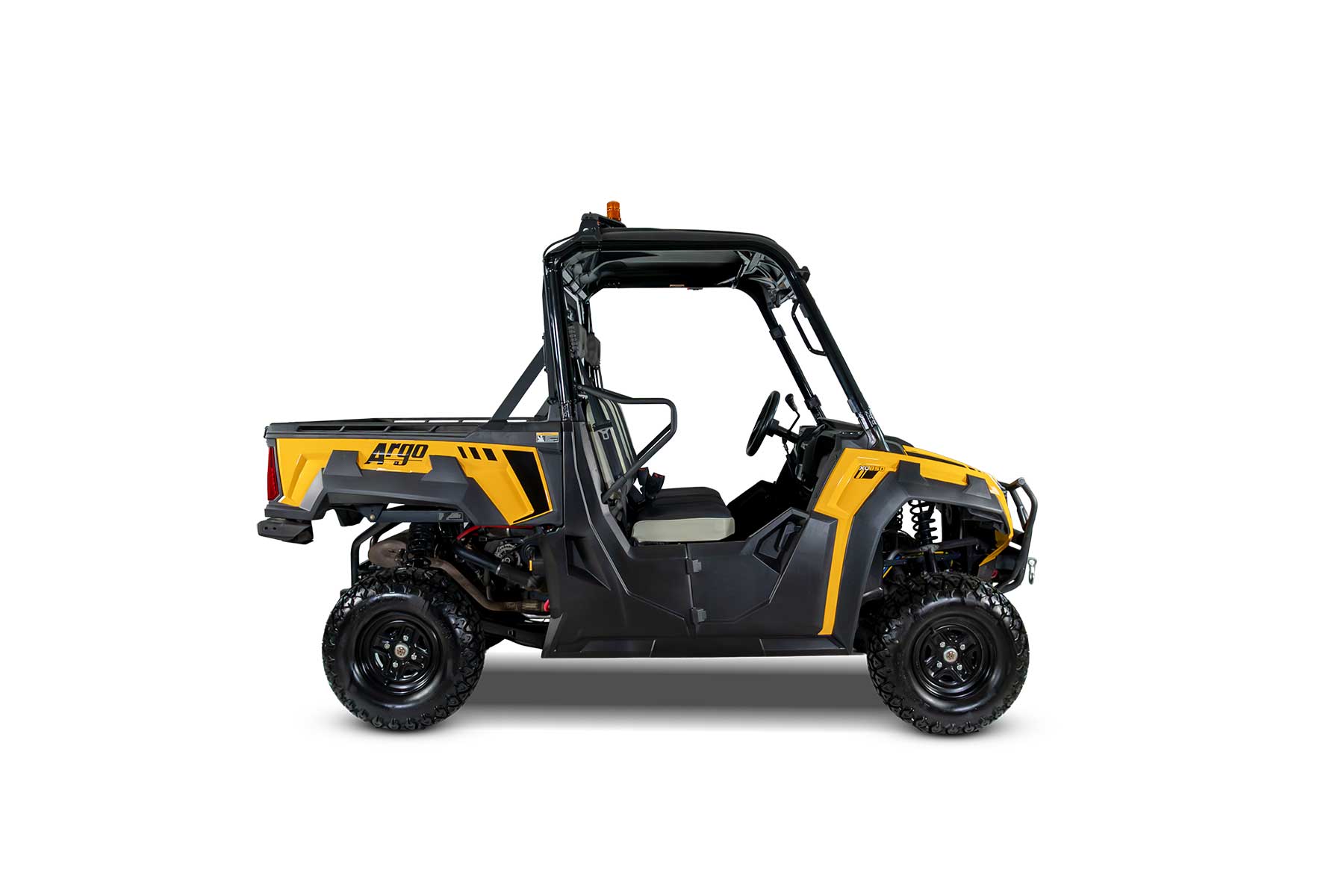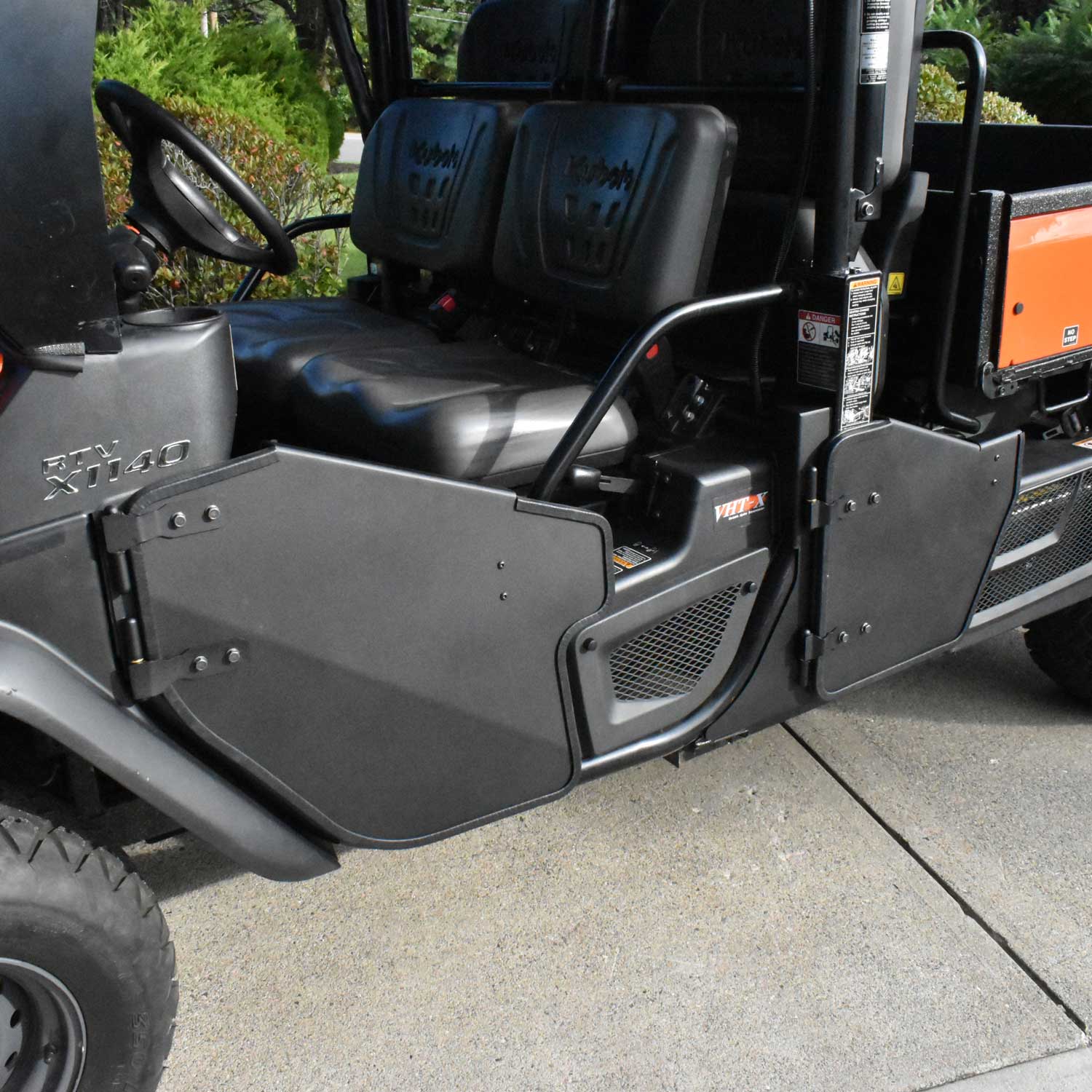Multi-row UTVs keep productivity high on jobsites

Most UTV manufacturers offer some sort of 4×4 multi-row UTV model, but is that the right type of utility vehicle for you?
Productivity is the bedrock of any successful jobsite. When dirt is moving and crews are working, contractors are happy. Because one saying still holds true on jobsites of every size and scale: Time is money. As long as budgets continue to stretch, deadlines tighten and expectations of what a crew can get done all in a day’s work increases, contractors will continue to look for new ways to work smarter, which allows them to work faster. Many contractors are looking to utility vehicles to pull double-duty, both as an equipment and material mover and a personnel transporter. Fortunately for the industry, utility vehicle manufacturers have responded to those needs with a vehicle model becoming more common on jobsites everywhere: the multi-row work vehicle.
“Multi-row UTVs are really in favor right now because they solve a lot of the common issues every jobsite — large or small — encounters,” says Hamish Lusty, vice president of commercial business at Cushman. “These UTVs handle and haul much like a two-seat work vehicle, but they can transport two and three times as many workers from the jobsite office or parking lot to the far ends of a large-scale jobsite in a short amount of time. It’s all about keeping productivity high from sunup to sundown.”
More Seating,Same Abilities
Some contractors may be concerned that adding seats for personnel on a work vehicle may mean sacrificing power, payload or handling. Typically, that isn’t the case. “Most UTV manufacturers offer some sort of 4×4 multi-row UTV model, like the Cushman Hauler 4×4 Crew, and you’re not going to notice much difference if you’ve driven a traditional utility vehicle before,” says Allen Evans, commercial project manager at Cushman. The turning radius of a multi-seat UTV is typically a little wider, but not by much. In most cases, the ride is actually smoother for passengers of a multi-seat vehicle because of the increased weight of the UTV.
“Multi-seating can be the best of both worlds for contractors needing to get a group of workers to a location on the jobsite quickly while still requiring that power and payload expected from a vehicle,” says Evans.
Just like a two-seat work vehicle, attachments and accessories can be added to a multi-seat vehicle customized to the contractor’s individual needs. A popular add-on is an extended roof to keep all passengers dry during inclement weather. Enclosures, cabs and windshields add comfort for the ride, while safety accessories like turn signals, mirrors and reverse alarms help to reduce jobsite accidents.
Replacing Pickup Trucks
Pickups are oftentimes used as the alternative to a multi-row commercial utility vehicle on a construction site. “Multi-row work vehicles do everything a large pickup truck can do on a jobsite, but much more efficiently,” Evans says. “Utility vehicles are easier to get in and get out of quickly so productivity remains high.” Furthermore, Evans says a UTV is much more maneuverable on a jobsite, because they can traverse areas off the beaten path that may not be safe for a full-sized pickup.
Maintenance of UTVs is also easier and less costly. In fact, about 70 percent of UTV owners maintain their vehicle themselves, Evans says, so a UTV is never out of commission. That’s not the case with a pickup, which usually needs to visit the garage for repairs.
“Multi-row work vehicles increase jobsite productivity from every angle,” Lusty says. “They give contractors the ruggedness needed to be a jobsite workhorse while moving crew members in position quickly so projects can get completed on time and under budget.”
Jeff Salem is public relations counsel for Swanson Russell.





Comments are closed here.